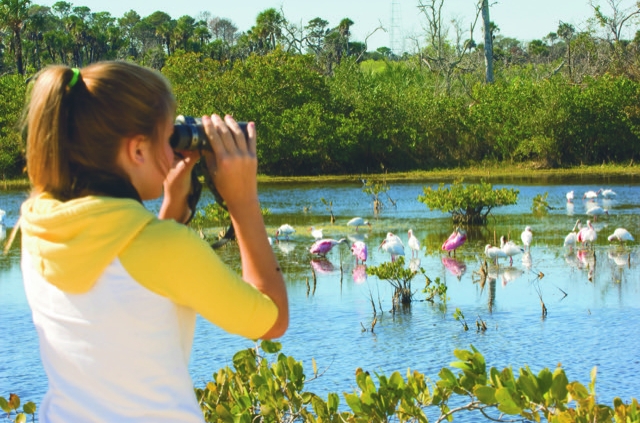Discover the Wildlife on Florida’s Space Coast
Florida’s Space Coast invites nature enthusiasts and adventure seekers to explore its rich tapestry of wildlife and natural beauty. The diverse ecosystems that make up this Central Florida paradise are home to dolphins, manatees, sea turtles, alligators and hundreds of other species of birds, mammals and reptiles.
Each year, thousands of sea turtles, including loggerheads, greens, and leatherbacks, return to the Space Coast’s shores to lay their eggs. Their nesting season runs from March to October and while these nocturnal activities are often elusive, guided sea turtle walks offered by nonprofit organisations provide a respectful and educational way to observe these ancient creatures in their natural habitat.
Visitors are requested to eliminate light and remove any obstacles on the beach so that the animals are not disturbed in any way and thus ensuring their success as a species.
Dolphins grace the waters of the Indian River Lagoon daily. Eco-boat tours offer a comfortable observation point while skimming the waters of the Indian River Lagoon with a knowledgeable guide and kayak tours present more intimate experiences with these playful mammals, allowing visitors to witness their acrobatics and social behaviours up close.
The cooler months of November to April bring manatees, affectionately known as “sea cows,” to the warmer waters of the Space Coast. Kayaking adventures in areas such as the Conservation Area in Cocoa Beach, Turkey Creek, the Sebastian Inlet State Park and Merritt Island National Wildlife Refuge provide opportunities to observe these gentle giants in their natural environment.
The Space Coast is a haven for birdwatchers, boasting 38 stops along the Great Florida Birding Trail which runs throughout the State. Winter months from November to February attract a plethora of species, including scrub jays, flamingos, and spoonbills, making it a prime destination for avian enthusiasts.
Visitors can mark their calendars for the 27th annual Space Coast Birding and Wildlife Festival, set to take place from January 21–25, 2026, at the Radisson Resort at the Port in Cape Canaveral. This five-day event features expert-led field trips, workshops, and an Expo Hall showcasing over 50 exhibitors, including optics vendors, tour operators, and conservation organisations.
Alligators are also a common sight in the Space Coast’s waterways. For a thrilling yet safe encounter, airboat rides on the St. Johns River offer a unique perspective of these prehistoric predators in their natural habitat.
In the surrounding landscape, both the sand dunes and the mangroves are extremely important to the region´s ecosystem. The dunes hold nests for the sea turtles and shorebirds, while the mangroves provide homes for wading birds and nurseries for fish and marine mammals.
In a commitment to preserving its natural beauty, the Space Coast completed a US$ 39 million beach restoration project, adding 4.7 million cubic yards of sand to its shores. This initiative not only enhances the beach experience but also provides vital habitats for sea turtles, crabs, and coastal birds.
For more information on wildlife viewing opportunities and upcoming events, visit www.visitspacecoast.com/wildlife. More information and a trip planning tool can be found on the official website. Once in the area the Visitor Information Center at 267 W. Cocoa Beach Causeway, Cocoa Beach, 32931 Florida provides local information and as well as some popular photo opportunities.


